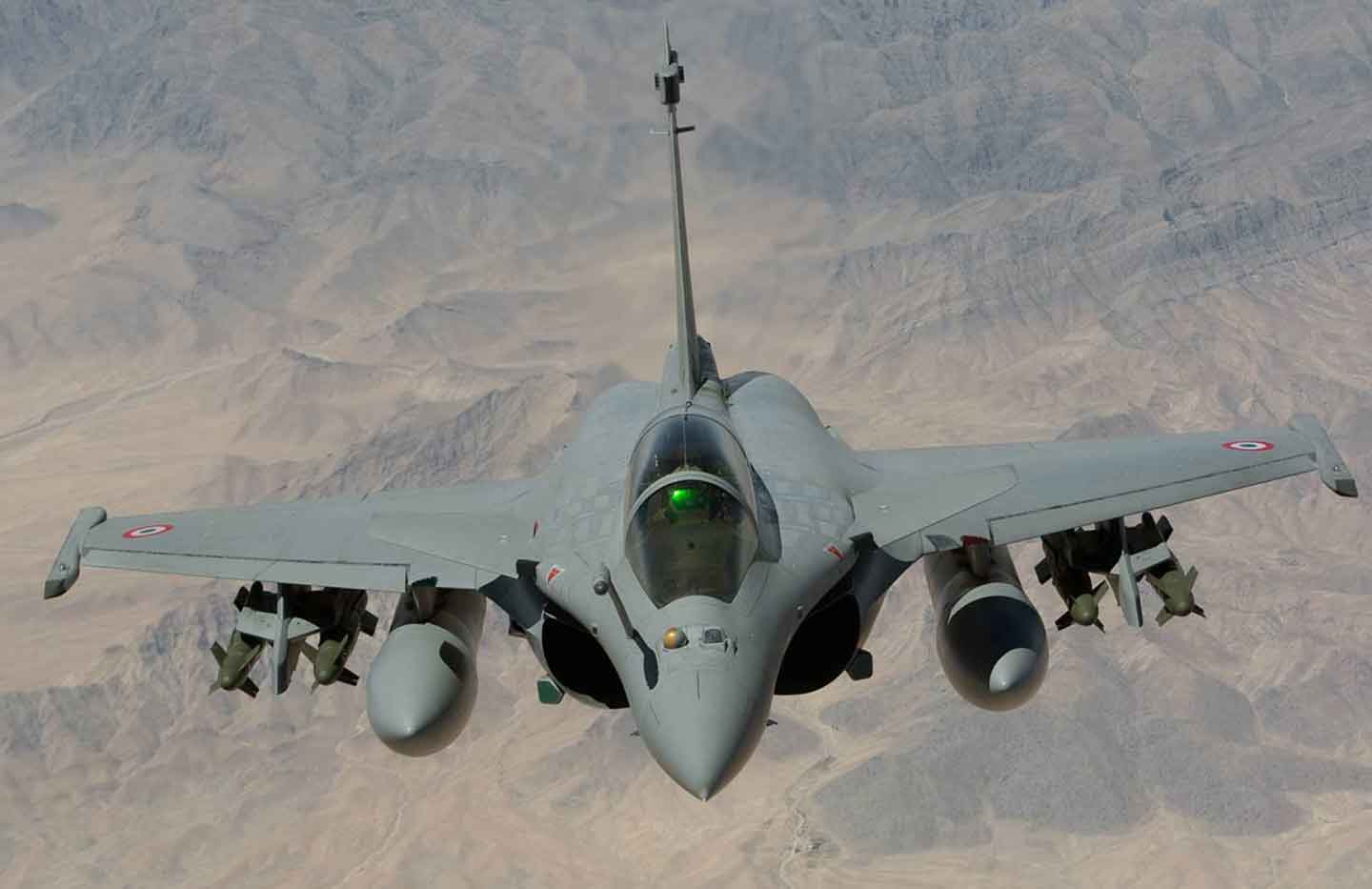
The Dassault Rafale has been selected as the preferred bidder for the Indian Air Force (IAF) Medium Multi Role Combat Aircraft (MMRCA) competition. This programme is massive, with 126 aircraft initially for the IAF and potential for at least 63 more. On top of that the Indian Navy could order the aircraft as well. (Photo: French Air Force)
The Indian Air Force (IAF) was established on 8th October 1932, a state of affairs that came about due to the passage of the ‘Indian Air Force Act’ by the then British colonial administration. The aim of this was that the fledgling IAF would act as an auxiliary to British Royal Air Force (RAF) units in India.
The first IAF squadron, No.1 Squadron was commissioned into service on 1st April 1933, having four Westland Wapiti biplanes and the first five Indian military pilots on strength. World War II was to stimulate the growth of the IAF, by 1945 the IAF had grown to a strength of nine squadrons, containing both combat and transport aircraft. In recognition of its excellent performance in operations against Japan, the force was renamed as the Royal Indian Air Force (RIAF) in 1945 by order of King George VI. Yet in 1947, with the partition of British India into India and Pakistan, the RIAF now found itself partitioned in turn, with its assets dived between the two new states.
Today the primary indigenous development effort is the HAL Tejas, a programme that still has to deliver a truly viable combat aircraft capability after many years of effort.
India retained the name of RIAF for its air force until it declared itself as a republic in 1950, leading the air force to opt for title of the Indian Air Force (IAF). Much of the equipment in service was of British origin from World War II and by this point was somewhat well used. This led India to invest in new combat aircraft, the first manifestation of which was the decision to order the De Havilland Vampire from Britain in 1950. Subsequently it was decided to produce the Vampire under license at Hindustan Aeronautics Limited (HAL). The first HAL-built Vampire flew in 1952 with production continuing through to 1960. In total the IAF acquired over 300 Vampire FB-52 fighters and 62 Vampire T-55 trainers built in both Britain and India.
The next major IAF purchase saw them turn to France placing an order for 71 Dassault MD-45 Ouragan aircraft on 25th June 1953, with deliveries starting later that year. The Ouragan proved successful in India and the IAF acquired 33 more aircraft from French Air Force stocks in 1957. Indeed Britain and France would obtain major combat aircraft contracts from India throughout the 1950s. In parallel with this, indigenous aircraft production capabilities at HAL would be strengthened through license production programmes.
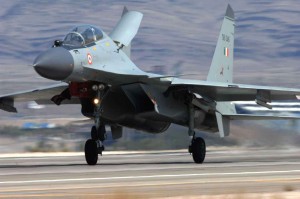
A Sukhoi Su-30MKI of the Indian Air Force (IAF) comes into land at Nellis Air Force Base, Nevada, to participate in a Red Flag exercise. The IAF will acquire 272 Su-30MKI aircraft, with 140 produced under license in India. An ongoing capabilities upgrade programme is planned for the aircraft. (Photo: US Air Force)
Direct purchases of combat aircraft favoured both France and Britain. In 1956 the IAF ordered 110 Dassault Mystère IVA fighters. Then in 1957 India ordered the English Electric Canberra bomber in the B(I)-8, PR-57 and T-54 versions with 80 aircraft purchased initially. Another 40 Canberra were acquired from the UK during the 1960s and 1970s. The IAF also selected the Hawker Hunter to meet its emerging fighter requirement in 1957, acquiring 160 Hunter F-56 aircraft initially, with another 53 acquired during the 1960s and 1970s.
Indigenous Programmes
British aircraft would also play a key role in the further development of the indigenous aircraft industry. In 1956 it was decided to acquire the Folland Gnat and produce it under license at HAL to meet a requirement for a lightweight and affordable fighter. HAL would produce more than 200 Gnat for the IAF. Later, in the 1970s, HAL would develop an improved version of the aircraft known as the Ajeet. Some 79 Ajeet were built by HAL, additionally ten Gnat airframes were converted to the Ajeet configuration.
India has become an important market for the US aerospace and defence industry, yet the US has not really made the breakthrough into major league contracts.
Local production of the Vampire and then the Gnat, led to the belief that India could design and build an indigenous high performance combat aircraft to meet a new IAF operational requirement developed in the mid-1950s. Eventually though it was decided to draft in some foreign expertise to assist and this saw Dr. Kurt Tank and a team of German engineers move into HAL. The end result was the HAL HF-24 Marut.
The Marut flew for the first time on 24th June 1961 and eventually 147 aircraft were built for the IAF, with the type entering service in 1967 and finally being retired in 1985. The Marut did not live up to the expectations of the IAF or HAL, but on the plus side it did deliver a respectable capability. The development of a viable high performance combat aircraft still remains a core goal for the Indian government and the national aerospace and defence industry.
Today the primary indigenous development effort is the HAL Tejas, a programme that still has to deliver a truly viable combat aircraft capability after many years of effort. Despite this the IAF has ordered the aircraft and the aircraft is now being prepared for service entry. The initial IAF order amounts to only 20 aircraft, with up to 200 required. The majority of Tejas for the IAF will feature a more powerful General Electric engine and other enhancements. Other indigenous future combat aircraft programmes exist in India, but, as we shall see, meeting future IAF needs appears to be mainly focussed on cooperative programmes and license production of foreign designs.
The collapse of the Soviet Union was a disaster for the Indian military as spares for its Soviet-supplied equipment became virtually impossible to obtain.
Other Suppliers
We have already described the important role that Britain and France played in meeting IAF needs in the 1950s. It is often forgotten that the US was also a supplier to the IAF in the 1950s, providing Fairchild C-119G transport aircraft for example. The US would then fade from the IAF picture until quite recently. The arrival of the first Lockheed Martin C-130J Hercules in India in December 2010, one of six aircraft on order, demonstrated that US industry was now back in contention for IAF orders.
In addition to the six C-130J transports, the IAF has ordered ten Boeing C-17 Globemaster III transport aircraft (with options on six more) and looks likely to order six more Hercules. On top of that the Boeing AH-64D Apache Block III appears on course to win the IAF attack helicopter requirement for 22 systems. It also worth noting that in 2008 Boeing won the Indian Navy Maritime Patrol Aircraft (MPA) competition and was awarded a $2.1 billion contract for eight P-8I aircraft.
India has become an important market for the US aerospace and defence industry, yet the US has not really made the breakthrough into major league contracts. The failure of the US contenders from Boeing and Lockheed Martin to make the final round of the IAF Medium Multi Role Combat Aircraft (MMRCA) programme (to be discussed later in this article), demonstrates that the US still has far to go before it can be considered a top tier supplier to India.
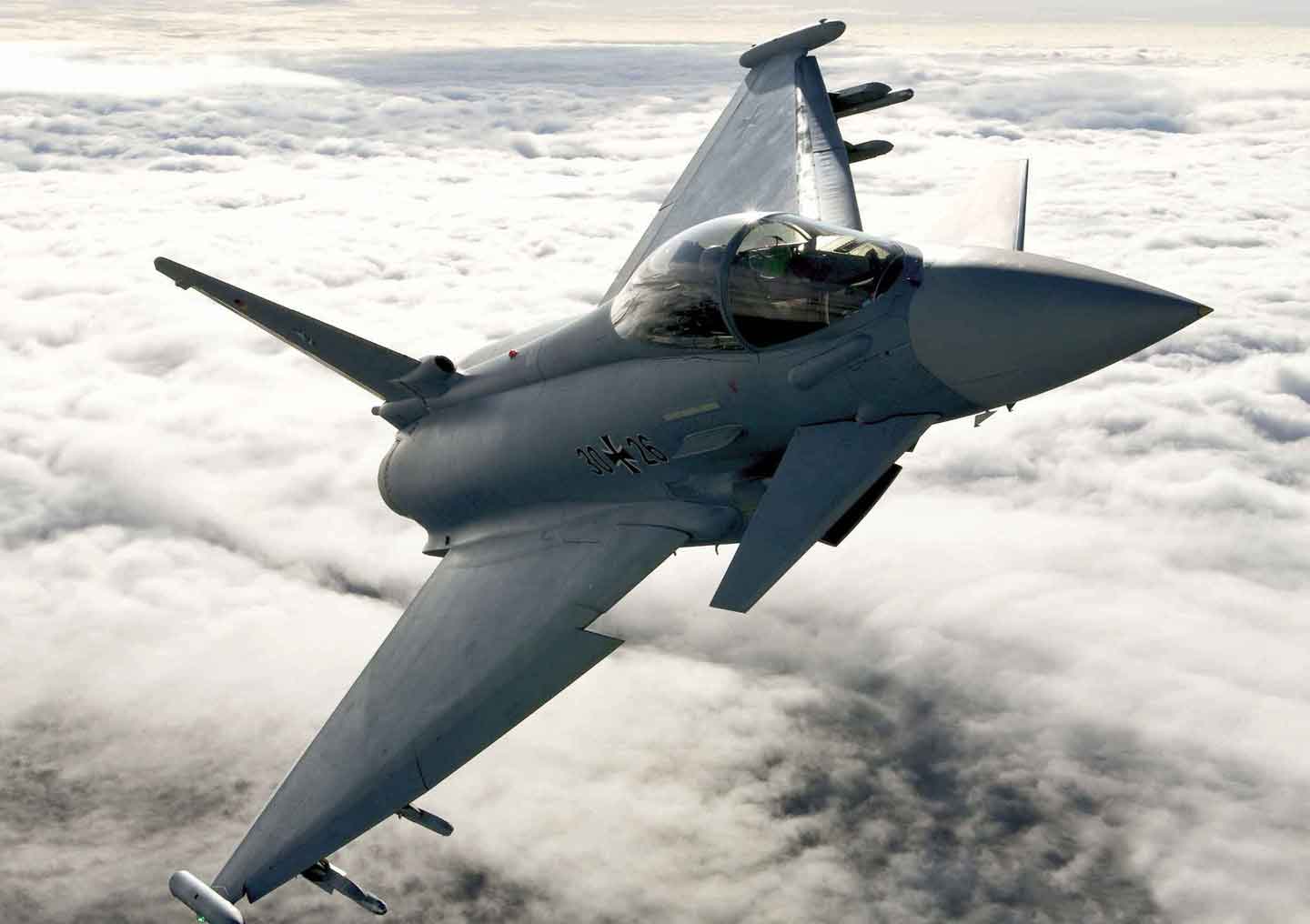
For Eurofighter (a German Air Force example is shown here), winning the Indian Air Force (IAF) Medium Multi Role Combat Aircraft (MMRCA) programme was immensely important and would have allowed them to build on previous export success in Austria and Saudi Arabia. The fact that India appears to have slipped from their grasp is a massive blow.
One country that certainly has a top tier supplier position in India is Russia, a position that builds on India’s links with the former Soviet Union. In the 1960s as a part of its non-aligned political status India starting discussing the purchase of defence equipment from the Soviet Union. From the IAF perspective this led initially to the acquisition of two advanced combat aircraft types in the form of the Mikoyan MiG-21 and the Sukhoi Su-7. Subsequently India would be granted license production rights for the MiG-21 with HAL manufacturing the aircraft.
Indian requirements for the Rafale could increase even further, as the Indian Navy is looking at its options regarding a new carrier fighter for its future fleet of indigenous aircraft carriers.
The Soviet Union became the leading supplier of defence equipment to India, and as far as the IAF was concerned this would see the arrival of combat types such as the MiG-23, MiG-25, MiG-27 and MiG-29. Also delivered were Antonov and Ilyushin transport aircraft and Mil helicopters. The collapse of the Soviet Union was a disaster for the Indian military as spares for its Soviet-supplied equipment became virtually impossible to obtain.
It took until the mid-1990s, and the emergence of Russia as a credible defence equipment supplier, for India to start resolving its Soviet parts problems. This also created the possibility for Russia to assume the mantle of the Soviet Union as a major equipment supplier. But in the gap between the fall of the Soviet Union and the arrival of Russia, other suppliers had stepped in to fill the breach, for example Israel. Despite this Russia is still a significant player in India.
The traditional supplier relationships with India that we have described still have some importance, but things have changed in India. Its economic transformation and increasing wealth have made India a key market for the aerospace and defence industry, and India is fully aware of the lure of its market. Having real requirements and the money to pay for them gives India the ability to impose extremely favourable offset and technology transfer terms, as well as the ability to demand state-of-the-art defence systems.
MMRCA Selection
The IAF MMRCA programme to acquire 126 new combat aircraft is without doubt one of the most important and hotly contested fighter programmes of recent years. Six contenders emerged for the programme in the shape of the Boeing F/A-18E/F Super Hornet, Dassault Rafale, Eurofighter Typhoon, Lockheed Martin F-16IN, RAC MiG-35 and the Saab Gripen. After an extensive evaluation of all the contenders, conducted both in India and overseas, the IAF announced that its choice for MMRCA would be between the Dassault Rafale and the Eurofighter Typhoon.
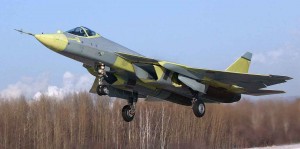
The first Sukhoi T-50 PAK-FA prototype flew in January 2010, with the aircraft providing the basis for the Indian Air Force (IAF) Fifth Generation Fighter Aircraft (FGFA) requirement. The IAF will order 214 PAK-FA and the aircraft is due to reach initial operational capability in India in 2017.
The two European contenders were then tasked by India to deliver a Best And Final Offer (BAFO) for what had been described as a $10 billion programme. Indeed as the MMRCA selection programme moved towards a conclusion it was starting to be described in India as a $12 billion programme. For both Dassault and Eurofighter winning MMRCA, either as a $10 billion or $12 billion programme, was critical.
The Indian Ministry of Defence (IMoD) had hoped to announce the winner of the MMRCA competition by the end of December 2011, but as 2011 ended there were suspicions that India would delay progress on MMRCA. The fact that Indian rupee was losing value against the major trading currencies, added to the fact that the MMRCA was already massively increasing in price seemed to make it inevitable that this programme would be delayed.
Surprisingly India did not delay the programme, and at the end of January 2012 IMoD announced that Dassault was the preferred bidder for the MMRCA programme. In confirmation of this a Letter Of Intent (LOI) was issued to Dassault and this will set the scene for contractual negotiations to commence between the French company and IMoD. These negotiations are expected to last between nine and 12 months, and on their conclusion the full and final MMRCA contract is due to be signed.
The first HAL manufactured aircraft will be delivered in 2017/2018 and Indian sources indicate that the anticipated production rate will be six aircraft per year. That would mean that MMRCA production at HAL would take place over 18 years!
According to reports out of India, the MMRCA programme is now set to cost some $15.125 billion. Apparently cost was the key differentiator between the two European aircraft; there are reports that Rafale was $5 million cheaper per aircraft in terms of direct acquisition cost. Furthermore Rafale also had a significant cost advantage in the category of Life Cycle Cost (LCC), i.e. the costs incurred over the projected 40-year, 6,000 flight hour operational life of the aircraft in the IAF.
As things stand at present, the MMRCA programme is still predicated on 126 combat aircraft amounting to six operational squadrons. The IAF will seek to add another 63 aircraft to this number, a total of three more squadrons, but the timing of this move will be subject to negotiation. Potentially IAF Rafale offtake could exceed 200 aircraft.
Indian requirements for the Rafale could increase even further, as the Indian Navy is looking at its options regarding a new carrier fighter for its future fleet of indigenous aircraft carriers. As Rafale is carrier-compatible and proven in service with the French Navy, its chances of obtaining an Indian Navy order are now very strong. Depending on the evolution of the Indian carrier programme some 40-60 combat aircraft could be required, with the potential to double this total.
The challenge for Dassault over the next nine to twelve months is hanging on to this victory and emerging out the other side with a contract that is signed, sealed and delivered.
Regarding the initial 126 MMRCA aircraft, the intention is that the first 18 aircraft will be completely manufactured in France and delivered to India in mid-2015/mid-2016; the exact date is dependent on the contract negotiation. In parallel with this, work will commence on the transfer of technology to allow the construction of a Rafale production line at HAL in India. The first HAL manufactured aircraft will be delivered in 2017/2018 and Indian sources indicate that the anticipated production rate will be six aircraft per year. That would mean that MMRCA production at HAL would take place over 18 years!
A word of caution needs to be expressed at this point. Yes Dassault is currently the preferred bidder, but contract negotiations in India have a habit of taking a long time and there is always the potential for negotiations to break down and throw the whole MMRCA effort into chaos. As things stand there is still a long way to go until France can consider the MMRCA deal as locked in and ready to go.
At the time of writing EADS were considering whether to submit a new lower priced Typhoon bid for MMRCA, although this would be unsolicited by IMoD. Then of course the potential impact of politics on the MMRCA process needs to be considered, if the opposition parties in India see MMRCA as a tool to attack the government they will not hesitate to use it. The end result could be disruption of the programme and delays.
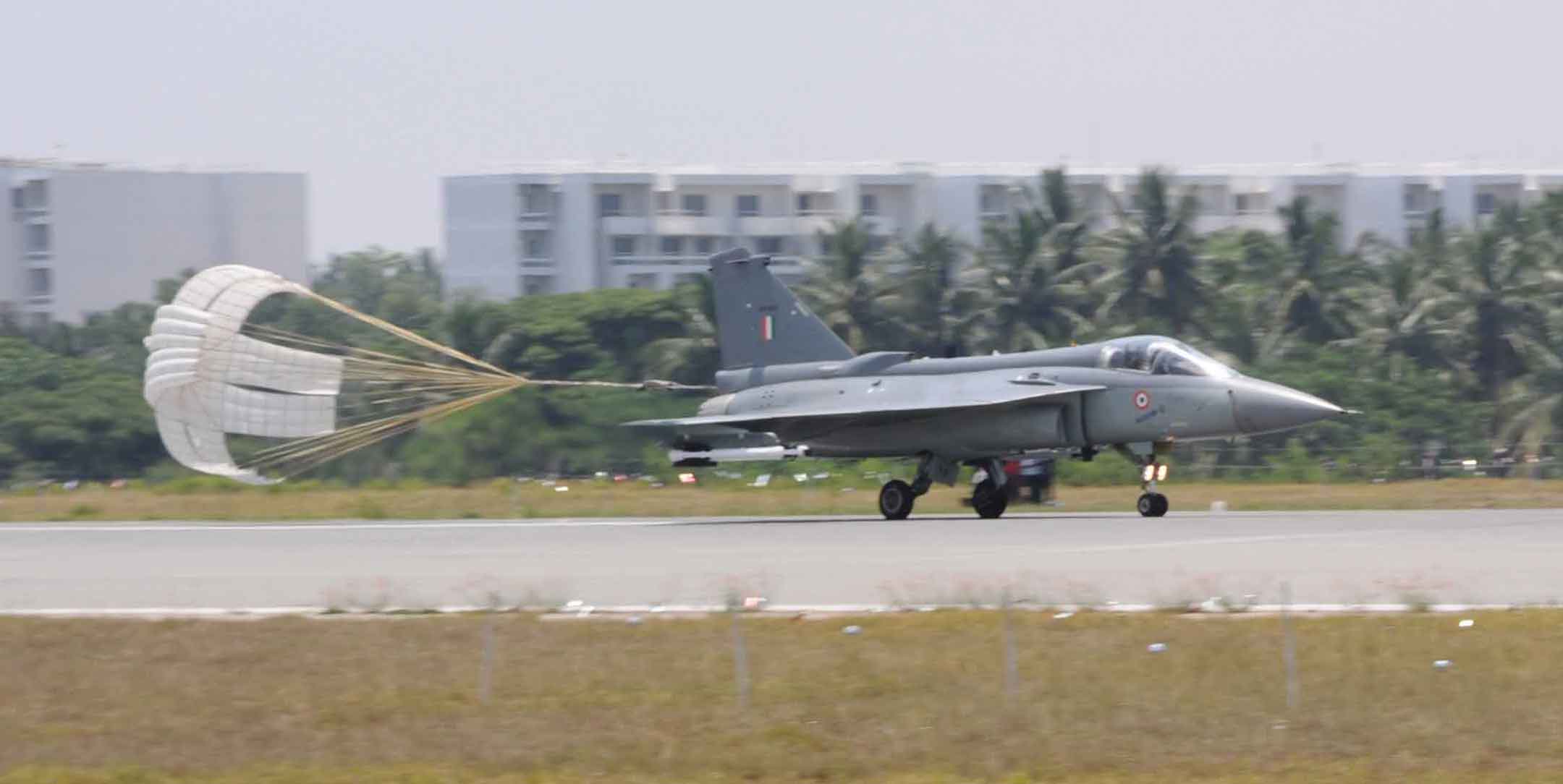
Designed by the Defence Research and Development Organisation (DRDO) Aeronautical Development Agency, the Tejas combat aircraft was built to meet the Indian Air Force (IAF) Light Combat Aircraft (LCA) requirement to replace the MiG-21. The IAF plans to acquire 200 Tejas eventually.
To summarise then, we are at a point where MMRCA is an absolutely massive victory for Dassault and the Rafale. The challenge for Dassault over the next nine to twelve months is hanging on to this victory and emerging out the other side with a contract that is signed, sealed and delivered.
More Key Capabilities
Virtually in parallel with MMRCA the IAF will be running another major programme and that is the Fifth Generation Fighter Aircraft (FGFA), the Sukhoi T-50 PAK-FA. This is a collaborative effort with Sukhoi, and the India partner in the programme will be HAL, with the aircraft due to enter service from 2017 onwards.
Assuming MMRCA is resolved and the FGFA programme delivers the promised capability to schedule, then from 2017 onwards the IAF will be shaping up as one of the most formidable air forces in Asia.
In total the IAF intends to acquire 166 single-seat and 48 twin-seat variants of the PAK-FA, according to a statement by the IAF commander in October 2011. This is an interesting turn of events, as initially the IAF intention was to have the bulk of its PAK-FA fleet as twin-seat aircraft and it was also looking at acquiring 250 aircraft. There are also concerns about Indian industrial involvement in the programme, in terms of technology transfer and financial investment.
Assuming MMRCA is resolved and the FGFA programme delivers the promised capability to schedule, then from 2017 onwards the IAF will be shaping up as one of the most formidable air forces in Asia. However, IAF capabilities are not just about what is to enter service from 2017 onwards. As things stand they have plenty of capability in service and on course to enter service before 2017.
Sukhoi Su-30MKI
If one aircraft reflects the transformation of IAF capabilities to those of an advanced air force it is the Sukhoi Su-30MKI. In November 1996 India placed a $1.8 billion contract with Irkut covering the supply of 40 aircraft (a contract for an additional ten was placed in September 1998). The first eight Sukhoi Su-30 entered IAF service in June 1997, but these were an initial capability based on the Su-30K and did not reflect the full Su-30MKI configuration.
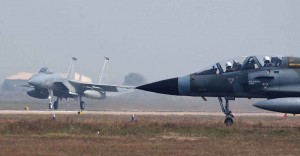
An Indian Air Force (IAF) Dassault Mirage 2000TH moves towards the runway during a Cope India exercise with the US Air Force in India. In July 2011 the IAF signed a contract with Dassault and Thales that will see its Mirage 2000H/TH force of 51 aircraft upgraded.
What was significant about the Su-30MKI is that the IAF had gotten Irkut and the Russian authorities to agree to the integration of foreign avionics into the aircraft. This saw systems from Thales, Elbit of Israel and other European companies used and the end result was a superior combat system. Also included on the Su-30MKI are systems of Indian origin.
India signed contracts to produce 140 Su-30MKI aircraft under licence at HAL Nasik, all of these aircraft are due to be delivered by 2014. Russia production of the Su-30MKI will eventually amount to 132 aircraft, with total IAF Su-30MKI purchases amounting to 272 aircraft. Thus far three IAF Su-30MKI aircraft have been attrition losses, two in 2009 (April and November) and one more in December 2011.
The IAF intends to upgrade the capabilities of its Su-30MKI fleet through the installation of advanced avionics, such as AESA radar, and new weapon system options. The first upgrade programme is due to commence in 2012 and ongoing upgrade programmes are expected over the next twenty years.
Upgrades
Numbers as a measure of strength are seen as very important by the IAF, hence the constant references to the fact that they only have just over 33 combat squadrons instead of the sanctioned 39. This focus on numbers has seen the IAF more forward on numerous upgrade and life extension programmes for existing combat aircraft assets. An example of this is the indigenous upgrade to some 38 MiG-27M aircraft developed in India and carried out by HAL.
For IAF increasing emphasis must be put on training, maintenance and sustaining the force, critical areas that up to now have tended to be ignored.
Another upgrade programme saw RAC MiG in Russia awarded a contract to upgrade the IAF MiG-29/MiG-29UB fleet. Originally this programme was for 62 aircraft, but attrition has reduced the numbers to 60. More recently, in July 2011, India awarded Thales and Dassault a contract to upgrade the IAF Mirage 2000H/TH fleet. HAL will play a major role in both the MiG-29 and Mirage 2000 upgrades.
The IAF selected the SEPECAT Jaguar for its Deep Penetration Strike Aircraft Requirement (DPSA) in 1979. The majority of the aircraft ordered by the IAF, 128 in total, were built by HAL in India. The Jaguar is highly rated in India and this led to the generation of an upgrade requirement to feature new engines, avionics and the integration of new weapons. The winner of the Jaguar upgrade programme has yet to be announced, but as with the other upgrade programmes the majority of the work will be carried out by HAL.
Futures
This brief analysis demonstrates that the IAF has truly become an air force to be reckoned with, programmes such as FGFA, MMRCA and the Sukhoi Su-30MKI are conclusive proof of that fact. There are more procurement programmes in prospect for a range of transport aircraft, tankers, AEW&C aircraft and a host of other systems.
There are also significant issues for the IAF to confront if its future objectives are to be met. As we have seen the IAF operates some very sophisticated combat aircraft and future programmes call for even more sophistication. Where the IAF has had problems is in the area of pilot training, a deficiency that has translated into a horrendous aircraft attrition rate and currently there is thought to be a shortage of some 400 pilots.
Action is being taken to deal with the training issue, for example the selection of the BAE Systems Hawk Mk132 for the Advanced Jet Trainer (AJT) role. The IAF ordered 66 Hawk Mk132, with 42 being built at HAL, then a second batch of 57 were ordered, with 40 for the IAF and 17 for the Indian Navy.
At the lower end of the training aircraft spectrum, the IAF is to replace its HAL HPT-32 basic trainers. The plan is to purchase 75 aircraft, with an option on 105 more that would be manufactured under license by HAL. After looking at five different options, the IAF is now moving to purchase the Pilatus PC-7 MkII for this requirement and 75 will be acquired at an estimated contract value of $550 million.
The IAF is emerging as a real force in the Asian air power environment and is rapidly adding impressive capabilities. However, increasing emphasis must be put on training, maintenance and sustaining the force, critical areas that up to now have tended to be ignored.




